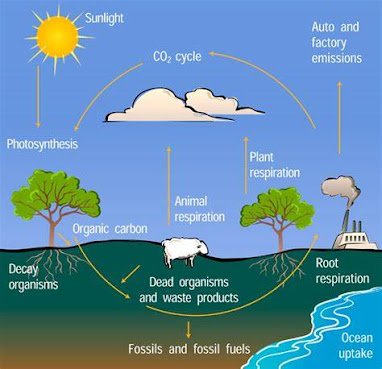How can nomadic animal keeping can contribute into environmental destruction?
Animals especially cows can destroy the environment when kept outdoors.Friday, July 26, 2024
Friday, July 5, 2024
CARBON PROJECTS AND MARKETS
CARBON PROJECTS AND MARKETS
I.
INTRODUCTION TO CARBON PROJECTS AND MARKETS:
A.
Definition and Purpose:
Definition:
Carbon projects and markets refer to initiatives and systems designed to
address climate change by reducing and offsetting greenhouse gas (GHG)
emissions. These projects involve activities that either prevent the release of
carbon dioxide and other GHGs into the atmosphere or actively remove them from
the air.
Purpose:
- Climate
Change Mitigation: The primary purpose of carbon projects and markets is
to mitigate climate change by reducing the concentration of greenhouse
gases in the atmosphere. This is achieved through the implementation of
projects that contribute to the overall goal of limiting global warming
and its adverse effects.
- Promotion
of Sustainable Practices: Carbon projects often focus on promoting
sustainable practices in various sectors such as energy, forestry,
agriculture, and industry. These projects encourage the adoption of
environmentally friendly technologies and processes to reduce carbon
footprints.
- Creation
of Incentives: Carbon markets create economic incentives for businesses
and organizations to adopt cleaner and more sustainable practices. By
assigning a value to carbon emissions through the trading of carbon
credits, businesses are motivated to invest in emission reduction
projects.
- Global
Cooperation: Carbon markets facilitate international cooperation in
addressing climate change. Through mechanisms like the Clean Development
Mechanism (CDM) and Joint Implementation (JI), developed and developing
countries can collaborate on emission reduction projects, promoting a more
inclusive and cooperative approach.
B.
Importance in Climate Change Mitigation:
- Emission
Reduction: Carbon projects play a crucial role in reducing greenhouse gas
emissions. They contribute to achieving emission reduction targets set by
governments and international agreements, such as the Paris Agreement.
- Offsetting
Emissions: Carbon markets provide a mechanism for companies and
individuals to offset their unavoidable emissions by investing in projects
that remove or reduce an equivalent amount of carbon from the atmosphere.
- Transition
to a Low-Carbon Economy: Carbon projects and markets are instrumental in
driving the transition to a low-carbon economy by promoting the
development and adoption of renewable energy, energy efficiency, and
sustainable practices.
- Adaptation
and Resilience: Some carbon projects, particularly those related to
sustainable land use and forestry, contribute to enhancing ecosystem
resilience and adapting to the impacts of climate change.
- Financial
Flows: The carbon market represents a significant source of financial
flows towards sustainable development. Funds generated through the trading
of carbon credits can be reinvested in additional carbon reduction
projects, further amplifying their impact.
- Market-Based
Approaches: Carbon markets introduce market-based approaches to
environmental conservation. By assigning a monetary value to carbon
emissions, a market is created where entities can trade carbon credits,
fostering a dynamic and flexible system for emissions reduction.
Subscribe to:
Comments (Atom)
SUSTAINABLE LAND USES IN TANZANIA: BUILDING A FUTURE OF HOPE
SUSTAINABLE LAND USES IN TANZANIA: BUILDING A FUTURE OF HOPE Tanzania is a land of immense beauty and abundance. From the fertile slopes...

-
EFFECTS OF CLIMATE CHANGE ON FOOD SECURITY Climate change has significant impacts on food security , affecting both current conditions...
-
Environment teacher( seated) watching as EHCA official presenting waste management facilities to the head of school of...






